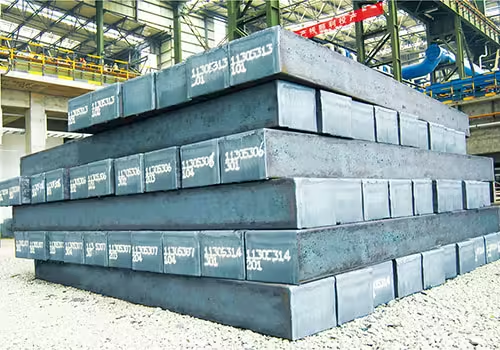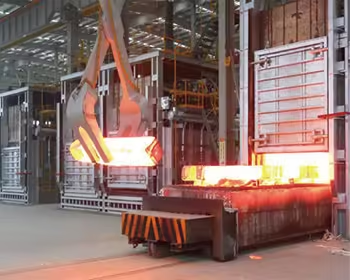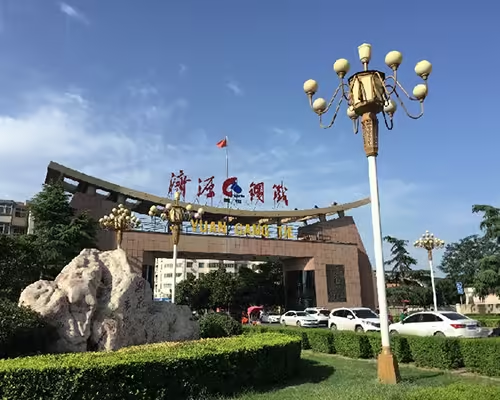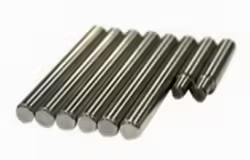
High Carbon Steel Billet: The Secret to Stronger Products
Table of Contents
Introduction

In today’s industrial age, the demand for stronger, longer-lasting materials continues to increase across a variety of sectors. At the core of these demands lies a key player: the high carbon steel billet. Known for its exceptional hardness, strength, and wear resistance, the high carbon steel billet has become a fundamental building block in manufacturing, construction, automotive, tooling, and many other heavy-duty industries.
A high carbon steel billet is not just a simple metal component. It serves as the base material from which a wide range of high-performance products are made. This blog post explores what makes high carbon steel billet so essential, its benefits, typical uses, manufacturing process, and how Henan Jiyuan Iron & Steel (Group) Co., Ltd. is contributing to global industries by producing superior quality billets.
Founded in 1958, Henan Jiyuan Iron & Steel (Group) Co., Ltd. is a leading Chinese steel manufacturer. With 8,000 employees, including 3,000 professional and technical staff, and assets totaling 25 billion CNY, the company offers a wide portfolio of high-quality steel products. It stands as one of China’s top steel producers, with international recognition and cutting-edge technology.
What Is a High Carbon Steel Billet?
A high carbon steel billet is a semi-finished metal product that contains a high percentage of carbon, generally between 0.60% and 1.00%. This increased carbon content enhances its mechanical strength, hardness, and resistance to deformation. While it is less ductile and harder to weld than low or medium carbon steel, it is the go-to material for making products that need to withstand extreme pressure or wear over time.
High carbon steel billets are typically created through a series of metallurgical processes, beginning with melting scrap metal or iron ore in a blast furnace, followed by refining, casting, and then rolling into the billet shape. These billets then serve as raw material for manufacturing tools, machine parts, gears, automotive springs, cutting edges, and other wear-resistant products.
The Manufacturing Process of High Carbon Steel Billets

Producing high carbon steel billet requires meticulous attention to detail and adherence to strict metallurgical standards. Each step in the process is crucial to ensuring the final product meets performance expectations in demanding applications.
1. Melting
The journey begins in the blast furnace, where selected raw materials—primarily iron ore, coke, and scrap steel—are melted together at temperatures reaching approximately 1,600°C (2,912°F). This high-temperature environment allows for the proper breakdown of raw materials and the initiation of chemical reactions essential for steel formation.
To achieve the desired carbon concentration for high carbon steel billet, alloying elements such as carbon, manganese, and silicon are introduced in precise amounts. This step is critical, as even small deviations can affect the billet’s mechanical properties. Monitoring systems ensure the carbon content stays within the specified range of 0.60% to 1.00%.
2. Refining
Once molten, the steel is transferred to a refining station, such as a basic oxygen furnace or electric arc furnace, depending on the facility. During this phase, impurities including sulfur, phosphorus, and excess oxygen are removed using chemical additives and gas injections.
Removing these contaminants enhances the steel’s mechanical properties, making the resulting high carbon steel billet less prone to cracking or internal flaws. It also boosts the steel’s fatigue strength, which is crucial for applications involving repeated stress, such as automotive or mechanical components.
3. Continuous Casting
The purified molten steel is poured into a continuous casting machine, where it solidifies into billets under controlled cooling. This technology represents a major advancement in steel production because it produces billets with consistent cross-sectional dimensions, chemical uniformity, and grain structure.
During casting, the steel flows into water-cooled molds that shape the billets, commonly in square or rectangular forms. The billets then travel through secondary cooling zones to complete the solidification process. Continuous casting minimizes segregation, internal porosity, and surface cracks—defects that could severely limit the utility of a high carbon steel billet.
4. Cooling and Cutting
After exiting the casting machine, the billets are air or water-cooled along specially designed rollers. Once they reach the required temperature, they are cut into standard lengths (usually between 6 and 12 meters) using high-speed shears or automated oxy-fuel torches.
Each billet is then inspected visually and using non-destructive testing (NDT) methods like ultrasonic or magnetic particle testing to detect internal voids, cracks, or inclusions. Only billets that meet stringent quality criteria move forward to be sold as raw materials or are sent for further processing into finished steel products.
Why Choose High Carbon Steel Billet?
The choice of base material often determines the performance and reliability of the final product. High carbon steel billet stands out among other steel types due to its unique combination of properties that make it exceptionally valuable for high-performance applications.
Superior Strength
High carbon steel billet is favored in engineering applications that demand strength and structural integrity. The elevated carbon content enhances tensile and compressive strength significantly, allowing components made from these billets to perform reliably under heavy mechanical loads.
Products such as crankshafts, gear wheels, and industrial cutting tools require this level of robustness to operate safely and efficiently. The resistance to deformation under stress means a longer lifespan and less frequent part replacement.
Exceptional Wear Resistance
High carbon steel billets are known for their outstanding wear resistance. This property is essential for components that experience constant friction, impact, or contact with abrasive materials. The high hardness level—often above 55 HRC when heat treated—ensures that edges stay sharp, gears don’t wear out prematurely, and springs retain their elasticity even under prolonged use.
In sectors like mining, agriculture, and heavy machinery, wear resistance translates to operational efficiency and reduced downtime.
Cost Efficiency Over Time
While the initial cost of processing a high carbon steel billet may be higher than that of low or medium carbon alternatives, its long-term performance delivers better value. Parts made from high carbon steel require fewer repairs and less frequent replacements, leading to significant savings over a product’s lifecycle.
Industries that prioritize reliability and total cost of ownership benefit the most from choosing this material. Maintenance costs, operational interruptions, and warranty issues are substantially reduced when high carbon steel billet is used.
Versatility
The versatility of high carbon steel billet is another compelling reason for its widespread adoption. It can be hot rolled, forged, or heat treated to achieve a wide range of mechanical properties. Whether you are manufacturing fine cutting blades or rugged machine parts, this billet type offers the adaptability needed for diverse product designs.
Applications of High Carbon Steel Billets in Different Industries

High carbon steel billets are essential raw materials in various industries due to their high strength, hardness, and durability. Their ability to endure stress, wear, and repeated use makes them invaluable in demanding applications.
Automotive Sector
High carbon steel billets are used in producing critical automotive parts such as crankshafts, gear shafts, and coil springs. These components must endure high stress and fatigue, making billet steel ideal for their construction.
Construction
In construction, billets are turned into reinforced bars, structural supports, and components for heavy equipment. Their load-bearing ability and wear resistance make them suitable for large-scale infrastructure projects like bridges and tunnels.
Tool and Die Industry
Tools like chisels, files, punches, and hammers are commonly forged from high carbon steel billets. These tools benefit from the material’s hardness and ability to maintain shape after repeated use.
Machinery
Industrial machines use billet-derived parts such as gears, rollers, cams, and sprockets. These components operate under continuous motion, and billet steel ensures long life and reliable performance.
Railways
Railway components such as rails, switches, and fasteners are made from high carbon steel billets to handle intense pressure and impact. Their strength and resistance to deformation ensure safety and durability over time.
Comparison Table: High Carbon Steel Billet vs. Other Steel Types
Below is a comparative look at different types of steel billets to highlight the advantages of high carbon steel billet:
| Property | Low Carbon Steel Billet | Medium Carbon Steel Billet | High Carbon Steel Billet |
|---|---|---|---|
| Carbon Content | ≤ 0.25% | 0.25% – 0.60% | 0.60% – 1.00% |
| Tensile Strength | Moderate | High | Very High |
| Hardness | Low | Moderate | High |
| Weldability | Excellent | Good | Challenging |
| Wear Resistance | Low | Moderate | Very High |
| Applications | Construction, Frames | Machinery, Parts | Tools, Springs, Gears |
Henan Jiyuan Iron & Steel: A Trusted Name in Steel

Henan Jiyuan Iron & Steel (Group) Co., Ltd. has become a symbol of strength and reliability in China’s steel industry. The company is:
- A national high-tech enterprise
- Listed among the Top 500 Chinese Enterprises
- Part of the Top 100 Global Iron and Steel Enterprises
- A vice president unit of the Special Steel Enterprises Association of China
Located in Jiyuan City, Henan Province, the company benefits from convenient transportation links, including a dedicated railway line and connection to the Jiaozhi Railway. With modern production technology and a commitment to excellence, it serves clients across domestic and international markets.
Their product range includes:
- High carbon steel billet
- High-quality steel bars
- Wire rods
- Construction steel
- Precision processed steel
Quality Assurance and Research Capability
Henan Jiyuan Iron & Steel doesn’t just focus on production; it also prioritizes research and development. The company has established:
- A Provincial Technology Center
- A National Accredited Laboratory
- A Postdoctoral Research and Development Base
- Henan Engineering Machinery Steel Engineering Technology Research Center
- Henan Special Steel Materials Research Institute
These centers drive innovation and ensure product consistency, keeping the company at the forefront of metallurgical development.
Choosing the Right High Carbon Steel Billet
When selecting a high carbon steel billet for your application, consider the following factors:
- Required mechanical strength
- Environmental conditions
- Welding and fabrication needs
- Cost constraints
- Supplier reputation
Henan Jiyuan Iron & Steel ensures traceable production, consistent quality, and technical support, helping clients find the perfect fit for their industrial requirements.
Conclusion
The importance of high carbon steel billet in today’s industry cannot be overstated. From heavy machinery to precision tools, its properties allow manufacturers to produce items that last longer, perform better, and reduce long-term costs.
Henan Jiyuan Iron & Steel (Group) Co., Ltd. combines decades of expertise with modern innovation to provide premium steel billets. Their unwavering commitment to quality, research, and customer satisfaction makes them a preferred choice in the competitive steel market.
To learn more about their products and services, visit the official website: High-Quality Steel | Chinese Steel Manufacturer – Jiyuan
FAQ
What is the typical carbon content of a high carbon steel billet?
It usually contains between 0.60% and 1.00% carbon.
Are high carbon steel billets easy to weld?
Not easily. They require special techniques due to their hardness and brittleness.
What are the key advantages of using high carbon steel billet?
High strength, excellent wear resistance, and longer lifespan.
What industries most commonly use high carbon steel billets?
Automotive, construction, machinery, tool making, and railways.
Why choose Henan Jiyuan Iron & Steel for steel billets?
The company offers reliable quality, strong R&D, a wide product range, and extensive industry experience.






